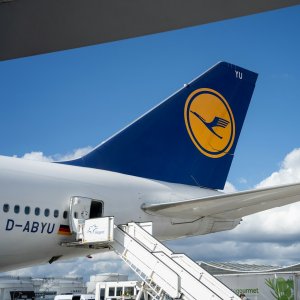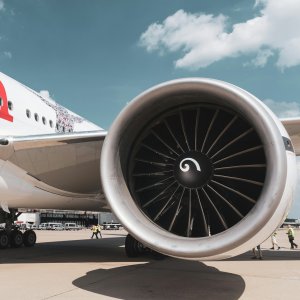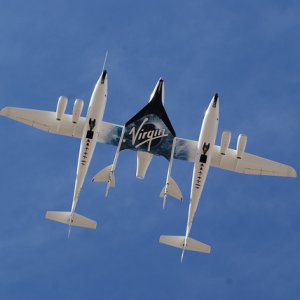Teague Forecasts Future Airline Industry Recovery, Innovation

STORY INLINE POST
Q: How is aircraft innovation helping airlines ensure passenger health, especially amid a shaky recovery?
A: There has been a large push toward the incorporation of antimicrobial surfaces, which involves e-cleaning protocols and designs that help sanitation. Those who travel continuously want to see the sanitation rating for airlines. Through cleaning and hygiene protocols, crowd management at airports, boarding and deplaning policies, airlines have been doing a great deal to demonstrate their commitment to passenger safety, which has also affected turn-around times for aircraft.
However, we have seen very little change in aircraft interior design as a result–most likely because of the expense involved in fundamentally changing an aircraft’s interior design. Changes in the name of safety must be consistent so they must be implemented fleetwide, which can be a considerable financial commitment. For this reason, airlines have not been keen to implement changes without reassurance that those changes will deliver long-term value. We invented a retrofit component called Airshield in June 2020. It is basically a plastic component fitted over the air vents above seated passengers. The component converts the air into currents that blow in between and around passengers, helping to control air movement by creating individual breathing zones on the aircraft. We have been working with our manufacturing partner Pexco Aerospace to get it market-ready and we should have it certified in the next couple of months for Airbus and Boeing’s narrow-body planes. We believe Airshield will usher in a whole new category of wellbeing products for aircraft.
Q: Which of Teague’s areas of focus is the most sought after by the industry and why?
A: The industry is recovering. The top 30 to 40 Tier 1 global airlines are committed to passenger experience and when they buy new aircraft, they take it as an opportunity to update their brand. That often means refreshing their interiors with new dress covers or a new look and feel for business class seats. Twin-aisle aircraft that do long haul routes have the greater differentiation in design as they include economy, economy plus, premium economy, business and, sometimes, first class. In first or business class, customization can be significant.
The pandemic seemed to mark a major transition in aircraft preference. We have seen a significant slow-down in the purchase of wide-bodies in favor of long range narrowbodies. We are seeing a really interesting trend where an airline might fly someone to a destination on a wide-body business class and fly them back on a narrow body–presenting some unique challenges. Despite the obvious differences in aircraft size and features, the passenger experience needs to be as good in both aircraft. Trying to match a larger aircraft’s passenger experience in a smaller aircraft is driving some interesting discoveries about how far we can push the narrow-body interiors to match wide-body interiors. We are helping airlines with long-range narrow-body premium products and we are really starting to discover the “hidden gems” in the aircraft: the areas of opportunity that nobody saw because we never had to look for them before. That is fun because it is new territory.
Q: How has collaboration between companies in aviation and tech evolved and where do you see the next big breakthroughs to improve passenger experience?
A: The big breakthroughs in tech have not properly landed in aviation but we know where they are going. In-flight entertainment (IFE) systems will become fully wireless, and access to your customized content from anywhere in the world will become common-place. This will be the expectation of the next generation of travelers and will be business-critical for airlines to deliver. The wireless part will also be critical in reducing the aircraft’s weight and make them more flexible for iterative hardware updates. Presently a large amount of cabling goes into the aircraft and the difficulties in changing it means owners are stuck with an IFE system for about 10 years, by which time all the cabling will be out of date. Making the IFE and communication systems wireless will be liberated from the commercial and product standpoints. IFE manufacturers are working hard to move toward a more flexible set of hardware. Once an airline does not have to provide every premium seat or every economy seat with cables, the airlines will have far greater choice in how they manage and update their fleet IFE.
Q: What opportunities do you see in Mexico for an airline like Teague’s Poppi? How could it disrupt the Mexican aviation market and what impact could it have on customer loyalty?
A: Poppi is designed to provide passengers with a digital experience. Microsoft is making some real progress with airlines, helping the industry’s digital transformation. It started on the operational side and now all airline personnel use customized versions of Teams, capturing a sea of data that generates insights that the airline never thought it would get. This process has greatly increased efficiency for the airlines, evening out the hit from the pandemic. We discussed creating a travel social media group on Poppi with Microsoft that might allow users to trade seats with others in the aircraft or to communicate with those going to the same destination. The system would also generate a digital concierge, an AI that jumps from the kiosk to the passenger’s phone and helps them navigate through the airport. Through Poppi, we gained a collection of examples of how the digital transformation would affect the industry. These examples are now becoming key principles for a number of airlines.
Q: How has Teague’s 2022 started and how is Mexico contributing to the company’s innovation efforts?
A: We are encouraged to see the industry start to pick up, demonstrating a strong resilience given how devastating it can be for airlines to operate for nine months without revenue. Surviving these challenging times has forced all companies–especially airlines–to use new tools, challenge conventional ways of thinking and innovate to survive. The industry is a different place now, and as business begins to blossom again, the focus has shifted in many ways. Throughout the pandemic, other mobility projects kept going and we have four product launches due in 2022 in the aviation and space sectors. We have a major Tier-1 airline interior launch, an exciting new Business Class Seat concept launching with a manufacturer. We are working with NASA designing habitats for Mars and on interiors for space vehicles and Earth-orbiting space stations. That industry is rapidly expanding; the race to colonize space is on the cutting edge of mobility.
Teague is a design and innovation company that combines technology expertise with a deep understanding of human behavior to deliver what’s next for companies in automotive, aviation, retail and e-commerce, smart cities, travel and hospitality, telecommunications, and technology. A leader in product, service, and experience design at the intersection of the physical and digital, Teague partners with bold brands that are reinventing the world such as Amazon, Boeing, Google, Starbucks, and Toyota to discover new opportunities and solve complex problems to shape the future.








 By Sofía Hanna | Journalist and Industry Analyst -
Wed, 01/19/2022 - 14:11
By Sofía Hanna | Journalist and Industry Analyst -
Wed, 01/19/2022 - 14:11















